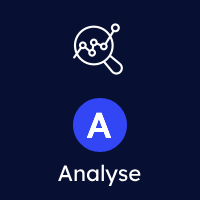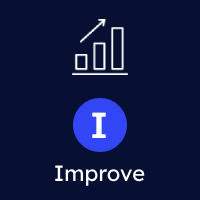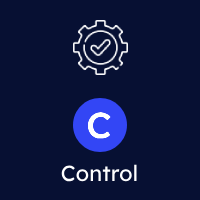




Centremetrics Lean Six Sigma Process Improvement
What is Lean Six Sigma?
Lean Six Sigma is a powerful methodology that combines Lean and Six Sigma principles to enhance efficiency and quality. Lean focuses on eliminating waste and optimizing processes, while Six Sigma aims to reduce variability and defects. Together, they provide a comprehensive framework for continuous improvement.
Origin of Lean Six Sigma
Lean Six Sigma originated from two distinct methodologies: Lean Manufacturing and Six Sigma. Lean Manufacturing was developed by Toyota in the 1940s as part of the Toyota Production System (TPS). It focuses on eliminating waste (muda) and improving flow and efficiency. Six Sigma, on the other hand, was developed by Motorola in the 1980s. It aims to reduce process variation and defects by using statistical methods and a structured problem-solving approach.
Lean and Six Sigma Integration
Many years ago, the Six Sigma industry found that Six Sigma could be greatly enhanced by incorporating Lean concepts, thereby creating Lean Six Sigma. This integration means that Lean Six Sigma programs include Lean principles in the Six Sigma curriculum. Today, most quality Six Sigma programs already have Lean principles incorporated, making Six Sigma and Lean Six Sigma essentially identical.
DMAIC Framework
The core methodology of Six Sigma is DMAIC, which stands for Define, Measure, Analyze, Improve, and Control. This structured approach ensures that improvements are data-driven and sustainable.
Our Approach
Initial Consultation
We begin with a detailed consultation to understand your business, challenges, and goals. This helps us tailor our Lean Six Sigma approach to your specific needs.
Define Phase
In the Define phase, we work with you to define the problem, set clear objectives, and identify key stakeholders. This phase ensures everyone is aligned and focused on the same goals. We use tools like Project Charters and SIPOC (Suppliers, Inputs, Process, Outputs, Customers) diagrams to clarify the scope and objectives.
Measure Phase
During the Measure phase, we collect and analyze data to understand the current performance of your processes. This involves mapping out processes, identifying key metrics, and establishing baselines. Tools such as Process Mapping, Value Stream Mapping, and Measurement System Analysis (MSA) are used to ensure accurate data collection.
Analyze Phase
In the Analyze phase, we use tools such as Fault Tree Analysis (FTA), Root Cause Analysis, and Statistical Analysis to identify the root causes of inefficiencies and defects. FTA helps us systematically explore potential causes and their relationships, ensuring a thorough analysis. We also use techniques like Fishbone Diagrams (Ishikawa) and Pareto Analysis to prioritize issues.
Improve Phase
The Improve phase involves developing and implementing solutions to address the root causes identified in the Analyze phase. This may involve process redesign, waste elimination, and other improvement strategies. Tools such as Kaizen (continuous improvement), 5S (Sort, Set in order, Shine, Standardize, Sustain), and Poka-Yoke (error-proofing) are employed to enhance processes.
Control Phase
In the Control phase, we establish controls to sustain the improvements made. This includes monitoring key metrics, implementing standard operating procedures, and providing training to ensure long-term success. Control charts, Standard Work, and Control Plans are used to maintain gains and ensure ongoing performance.
Leveraging Technology and Digital Tools
Data Analytics
Utilizing advanced data analytics tools to gather and analyze large datasets, providing deeper insights into process performance. Techniques such as regression analysis, hypothesis testing, and multivariate analysis are used to understand complex data relationships.
Predictive Analytics
Implementing predictive analytics to forecast potential issues and proactively address them before they become problems. Predictive modeling helps in anticipating future trends and behaviors.
Automation
Integrating automation technologies to streamline repetitive tasks, reduce errors, and increase efficiency. Robotic Process Automation (RPA) and Intelligent Automation (IA) are used to automate routine tasks and enhance productivity.
Root Cause Analysis
Using root cause analysis, we can quickly identify patterns and correlations that might be missed by traditional methods. This approach leverages advanced data processing techniques to analyze large datasets, uncovering insights that drive effective problem-solving and process improvements. By systematically examining data, we can pinpoint the underlying causes of issues and develop targeted solutions to enhance efficiency and quality.
Benefits of Our Lean Six Sigma Services
- Increased Efficiency: Streamline processes to reduce waste and improve productivity.
- Enhanced Quality: Reduce defects and variability to deliver higher quality products and services.
- Cost Savings: Eliminate unnecessary costs and improve resource utilization.
- Revenue Growth: Improved efficiency and quality lead to higher customer satisfaction and increased revenue.
- Employee Engagement: Involving employees in continuous improvement initiatives boosts morale and fosters a culture of excellence.
- Customer Satisfaction: Delivering consistent, high-quality products and services enhances customer loyalty and satisfaction.
Why is Six Sigma so Effective?
On the surface, it may seem that the effectiveness of Six Sigma is due to its reliance on scientific tools and techniques, but in reality, Six Sigma is more about following time-tested business practices rather than just crunching statistical data. The DMAIC methodology ensures a structured approach to problem-solving, making Six Sigma highly effective.
Why Choose Us?
- Expertise: Our team of certified Lean Six Sigma professionals brings extensive experience and knowledge.
- Tailored Solutions: We customize our approach to meet the unique needs of your business.
- Comprehensive Support: From initial consultation to implementation and control, we provide end-to-end support.
- Proven Results: Our methodologies and tools have been proven to deliver significant improvements and drive revenue growth.
- Innovative Techniques: We leverage the latest technologies and methodologies to ensure your business stays ahead of the competition.
- Sustainable Practices: Our focus on sustainability ensures that improvements are not only effective but also environmentally responsible.
Additional Insights into Lean Six Sigma
Lean Six Sigma is not just a set of tools and techniques; it is a philosophy that promotes a culture of continuous improvement. It encourages organizations to strive for perfection by systematically eliminating waste and reducing variability. This approach leads to more efficient processes, higher quality products, and greater customer satisfaction.
The Role of Leadership in Lean Six Sigma
Effective leadership is crucial for the successful implementation of Lean Six Sigma. Leaders must be committed to the principles of Lean Six Sigma and actively support improvement initiatives. This involves providing the necessary resources, fostering a culture of continuous improvement, and recognizing and rewarding employees’ contributions to process improvement.
Lean Six Sigma in Different Industries
Lean Six Sigma is applicable across various industries, including manufacturing, healthcare, finance, and service sectors. Each industry can benefit from Lean Six Sigma by tailoring the methodology to address specific challenges and opportunities. For example, in healthcare, Lean Six Sigma can be used to improve patient care and reduce medical errors, while in manufacturing, it can enhance production efficiency and product quality.
Lean Six Sigma in Healthcare Services
In the healthcare industry, Lean Six Sigma has proven particularly beneficial. By applying Lean Six Sigma principles, healthcare facilities can streamline their processes, reduce wait times, and improve patient outcomes. For instance, Lean Six Sigma can help in optimizing appointment scheduling, reducing the time patients spend waiting for services, and ensuring that resources are used efficiently. This leads to better patient satisfaction and more effective treatment outcomes.
Continuous Improvement Culture
Creating a culture of continuous improvement is essential for sustaining Lean Six Sigma initiatives. This involves engaging employees at all levels, encouraging open communication, and fostering a mindset of innovation and problem-solving. Organizations that embrace a continuous improvement culture are better equipped to adapt to changing market conditions and maintain a competitive edge.
The Future of Lean Six Sigma
As technology continues to evolve, Lean Six Sigma will also adapt to incorporate new tools and techniques. The integration of artificial intelligence, machine learning, and advanced analytics will further enhance the effectiveness of Lean Six Sigma. Organizations that embrace these advancements will be better positioned to achieve operational excellence and drive sustainable growth.
Conclusion
Lean Six Sigma is a robust methodology that combines the strengths of Lean and Six Sigma to drive continuous improvement. By focusing on eliminating waste, reducing variability, and enhancing quality, Lean Six Sigma helps organizations achieve operational excellence and sustainable growth.
Partner with Centremetrics
At Centremetrics, we are dedicated to helping organizations achieve their full potential through Lean Six Sigma. Our team of experts is committed to providing tailored solutions that drive significant business improvements. Whether you are looking to optimize a single process or transform your entire operation, we have the expertise and tools needed to help you succeed. Partner with us to unlock your organization’s full potential and achieve lasting success.
Book a Free Consultation